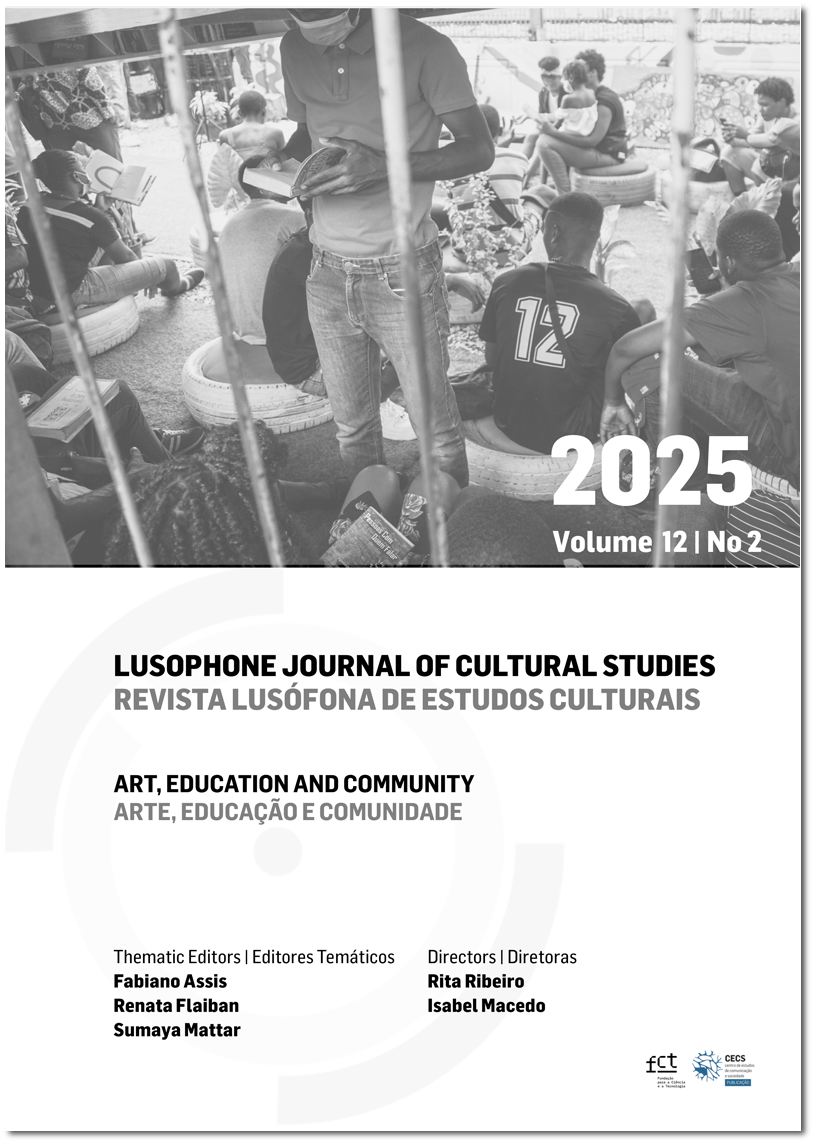Fabrics of Memory: Interlacing Life History, Sewing Practice, and Learning Through Art
DOI:
https://doi.org/10.21814/rlec.6546Keywords:
sewing, life history, Japanese immigration, memoryAbstract
This research investigated the possible interweavings between life history and the knowledge of a manual craft, with learning through art as its horizon. The investigation stemmed from the time spent with Lígia Hatsuko Hayashi, my paternal grandmother, a Japanese immigrant who arrived in Brazil in the 1930s and worked as a seamstress throughout her life. Through meetings in which we sewed and conversed, Lígia shared her memories with me and taught me her craft — sewing — thus activating a process of knowledge transmission that articulated technical, sensorial, and cultural aspects. The study adopted oral history and autoethnography as its primary methodologies, allowing attentive listening to individual memory as a source of knowledge and reflection. Personal documents, records, and biographical objects were gathered as analytical material, composing a narrative that engages with the social history of Japanese immigration in Brazil. The research was based on the assumption that individual memory is a constitutive part of collective memory, and that non-hegemonic narratives — such as that of an elderly, foreign woman belonging to the working class — can disrupt dominant historical discourses and practices consecrated by traditional arts. Thus, sewing, understood as a popular and feminine form of know-how, proved to be a powerful field of creation, affection, and learning. Prompted by the question “how can I learn to teach with my grandmother?”, the study reflects on the transmission of knowledge in non-school-based learning processes and its implications for Art Education, advocating the recognition of sensitive, relational experiences grounded in life trajectories as both poetic and pedagogical instruments.
Downloads
References
Artières, P. (1998). Arquivar a própria vida. Estudos Históricos, 11(21), 9–34.
Bosi, E. (1994). Memória e sociedade: Lembranças de velhos (3.ª ed.). Companhia das Letras. (Trabalho original publicado em 1987)
Bosi, E. (2003). O tempo vivo da memória: Ensaios de psicologia social (2.ª ed., pp. 13–48). Ateliê Editorial.
Demartini, Z. B. F. (2012). Japoneses em São Paulo: Desafios da educação na nova terra. In T. M. Kishimoto & Z. B. F. Demartini (Eds.), Educação e cultura: Brasil e Japão (pp. 23–46). Editora da Universidade de São Paulo.
Halbwachs, M. (1990). A memória coletiva (L. L. Schaffter, Trad.). Vértice. (Trabalho original publicado em 1950)
Kossoy, B. (2010). Retratos e auto-retratos: Imigrantes japoneses no estado de São Paulo. In M. L. T. Carneiro & M. Y. Takeushi (Eds.), Imigrantes japoneses no Brasil: Trajetória, imaginário e memória (pp. 369–406). Editora da Universidade de São Paulo.
Okamoto, M. Y. (2008). Imigração japonesa: Rupturas e reconstrução de vínculos afetivos. Arte & Ciência.
Queiroz, M. I. P. de. (1991). Variações sobre a técnica de gravador no registro da informação viva. T. A. Queiroz.
Sakurai, C. (1993). Romanceiro da imigração japonesa. Editora Sumaré/FAPESP.
Thompson, P. (2002). História oral e contemporaneidade (A. Zhourie & L. M. L. Pereira, Trads). História Oral, 5, 9–28. https://doi.org/10.51880/ho.v5i0.47
Wall, S. (2006). An autoethnography on learning about autoethnography. International Journal of Qualitative Methods, 5(2), 146–160. https://doi.org/10.1177/160940690600500205
Downloads
Published
How to Cite
Issue
Section
License
Copyright (c) 2025 Priscila Akimi Hayashi

This work is licensed under a Creative Commons Attribution 4.0 International License.
Authors own the copyright, providing the journal with the right of first publication. The work is licensed under a Creative Commons - Atribuição 4.0 Internacional License.












